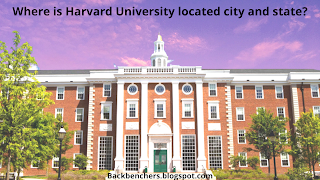Yellowstone National Park Montana
Yellowstone National Park Montana
Where is Yellowstone National Park located? When was Yellowstone national park established? Yellowstone National Park history, In what year was it declared a World Heritage Site? Yellowstone national park animals and plants, Yellowstone national park animals and plants, Entertainment, Yellowstone Travel Tips.
 |
| Picture: Yellowstone National Park |
Where is Yellowstone National Park located?
Yellowstone
National Park is an American national park located in the western United
States, mainly in the northwest corner of Wyoming, and extends to Montana and
Idaho.
When was Yellowstone national park established?
It was
established by the US Congress and was signed into law by President Ulysses S.
Grant on March 1, 1872.
What is the
name of the world's first national park?
Yellowstone was the first national park in the United States and is widely regarded as the first national park in the world. The park is known for its wildlife and its many geothermal features, especially the Old Faithful Geyser, one of its most popular. Although it represents many types of biome, subalpine forests are the most common. It is part of the South Central Rockies Forest Ecoregion.
Yellowstone National Park history
Although Native Americans have lived in the Yellowstone region for at least 11,000 years, organized exploration did not begin until the end of the 18৬0s, with the exception of mountaineering in the early 19th to mid-19th centuries.
The management and
control of the park fall primarily under the jurisdiction of the United States
Department of the Interior, with Columbus Delano being the first Secretary of
the Department of the Interior to oversee the park.
The United States was finally commissioned to oversee the development of Yellowstorm from July 30, 1886, to 1916. The park was relocated to National Park in 1917, which lasted years.
Hundreds of structures have been built and preserved for their
architectural and historical significance, and more than a thousand
archeological sites on both sides have been examined.
How big is Yellowstone National Park?
Yellowstone National Park covers an area of 3,46 square miles (6,963 sq km), covering lakes, ravines, rivers, and mountain ranges. Yellowstone Lake is one of the largest high-altitude lakes in North America and centers around the Yellowstone Caldera, the largest supervolcano on the continent.
Caldera is considered a
dormant volcano. In the last two million years it has exploded several times
with tremendous force.
Yellowstone has more than half the geyser and hydrothermal properties in the world, which is the fuel for this ongoing volcano. Lava flows from volcanic eruptions and rocks cover most of the land area of Yellowstone.
The park is the epicenter
of the larger Yellowstone ecosystem, the largest remaining almost-intact
ecosystem in the northern temperate zone of the world.
In what year was it declared a World Heritage Site?
In 1978,
Yellowstone has declared a UNESCO World Heritage Site.
Yellowstone national park animals and plants
Yellowstone is home to the highest concentrations of mammals in the lower 48 states.
In addition to the diversity of small animals, Yellowstone is notable for its large prey-hunting mammal complexes, which include eight incoherent species (large sheep, bison, elk, moose, mountain goat, mule deer, prawns, and white-tailed deer) and seven large predators. (Black Bear, Canada Links, Coyotes, Grizzly Bears, Mountain Lions, Wolverines, and Wolves).
The goal of the National Park Service is to maintain the ecological processes that sustain these mammals and their habitats and the changes in their populations.
By observing.
Seasonal or migratory movements carry many species across the park boundaries
where they are subject to different management policies and land use by humans.
Understanding
climate change and the link between these drivers will be important for informing
about the ecology and management of Yellowstone wildlife in the coming years.
The goal of the National Park Service is to maintain the ecological processes that sustain these mammals and their habitats and the changes in their populations. By observing.
Seasonal or migratory movements carry many species across the park
boundaries where they are subject to different management policies and land use
by humans.
Entertainment
Yellowstone
attracts more than 4 million visitors every year. Yellowstone offers numerous
recreational opportunities, including hiking, camping, boating, fishing, and
sightseeing. Paved roads provide access to major geothermal areas as well as
near some lakes and waterfalls. In winter, visitors often enter the park on
guided tours using either a snow coach or a snowmobile.
Yellowstone Travel Tips
The best time to visit Yellowstone National Park is from late April to May, as well as from September to early October. These shoulder months allow for mild weather, fewer crowds, and little to no road closure.
July and August are the most
popular months to visit. The kids are out of school, and the weather is warm
enough to sleep outside. However, this park is not unfamiliar with the cold.
Temperatures
in the higher elevations of the park are reported to drop to below 30 degrees
Celsius in summer. In winter, expect a wide range of temperatures from subzero
digits to as high as 20 degrees Celsius. Don't let that stop you: there's
nothing like steaming ice under a thick blanket of snow and ice.
Compared to
other national parks in the country, Yellowstone has plenty of food options.
Inside the park, you'll find general stores, canteens, snack shops, and even
bars.
Yellowstone is home to a handful of sit-down restaurants, most of which are located in popular attractions such as Mammoth Hot Springs, Old Faithful, and Yellowstone Lake.
Park canteens tend to serve casual fare like sandwiches, while high-end
restaurants like Lake Hotel Dining Room and Mammoth Hotel Dining Room offer a
selection of game meats (including bison, elk, and trout).
While there are a few dining options within the boundaries of Yellowstone National Park, consider bringing along a cooler with lunch items and snacks so you don't have to worry about staying close to one of the more developed areas of the park. Remember, it can take hours to get from one Yellowstone attraction to another.
Other dining
areas can be found in the small towns surrounding the park. In Cody, Wyoming,
previous visitors suggested meals at the Local and The Cody Cattle Company,
while past travelers who visited West Yellowstone, Montana, were overwhelmed
with the food served at Wild West Pizzeria and Running Bear Pancake House.
The best way to get around Yellowstone National Park is by car; There is no public transport in the park. You can rent a car at any of the nearby airports, including Cody, Wyoming's Yellowstone Regional Airport (COD); Jackson Hole Airport (JAC) Jackson, Wyoming; West Yellowstone, Montana Yellowstone Airport (WYS); And Bozeman Yellowstone International Airport (BZN) in Bozeman, Montana.
Parking is
available throughout the park but depending on the time of year and day,
securing it can be a challenge. Guided tours of the park are also available.



What a nice article is! and keep it.
ReplyDeletegoood job bro nice tric
ReplyDelete